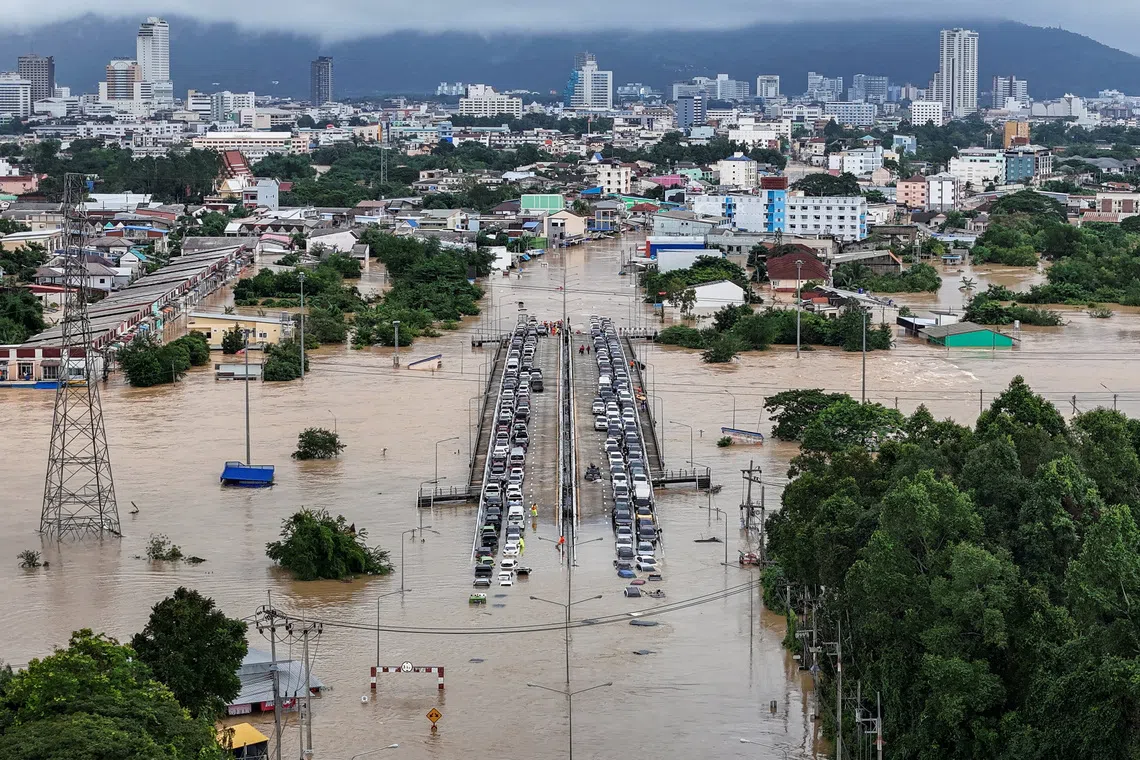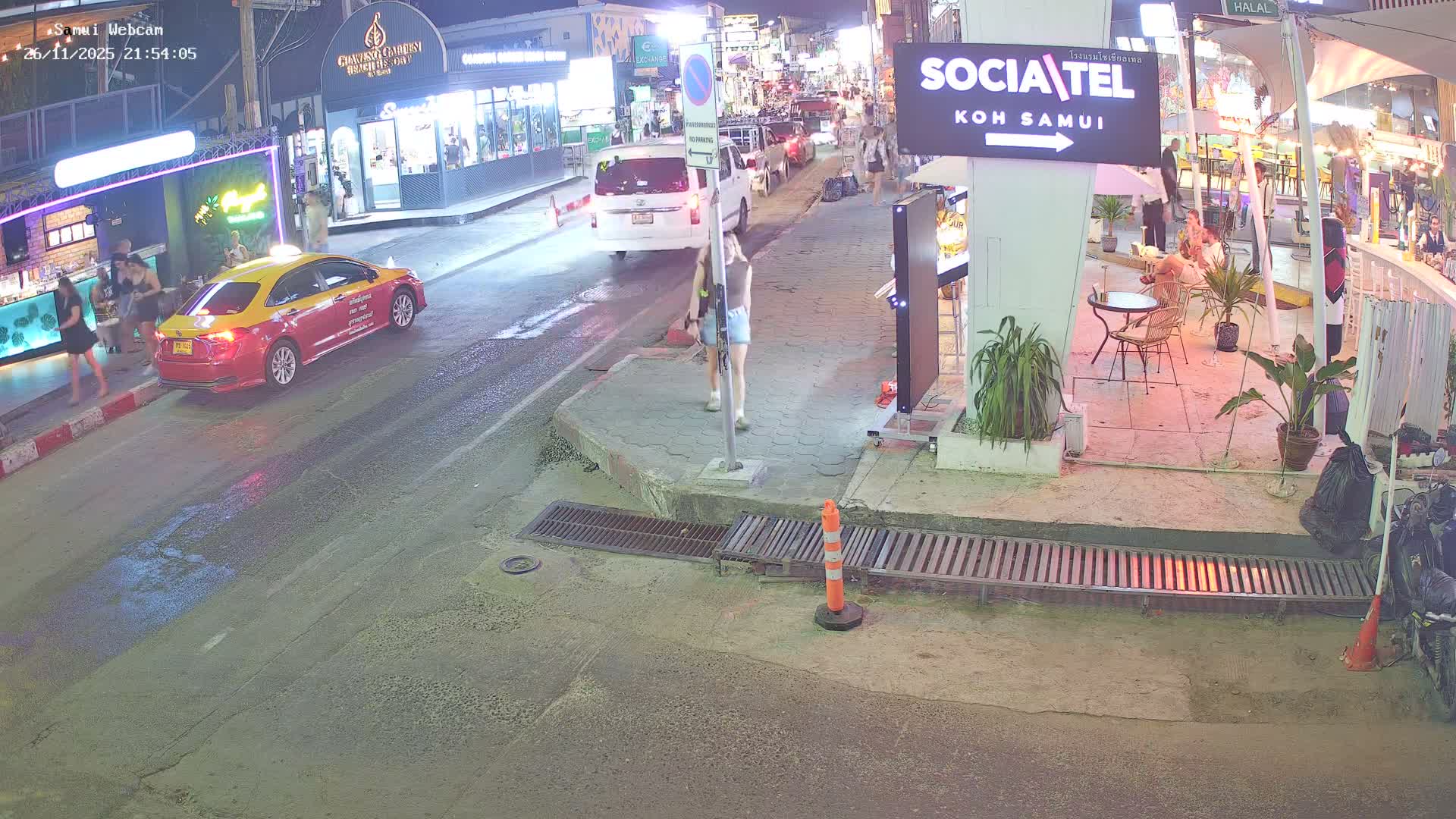Thai Military Mobilizes for Devastating Southern Flood Crisis as Heavy Rains Impede Relief Efforts Across Nine Provinces
 Thailand
Natural Disaster
Thailand
Natural Disaster

Thai military takes command of severe southern floods, deploying naval and air assets as 2.1M are affected across 9 provinces. 13 lives lost. Malaysia also face
Thai Military Takes Command Amidst Catastrophic Southern Floods
Thailand is grappling with a severe flood crisis, prompting its military to assume full command of relief operations as of November 25. Heavy rainfall has significantly hampered rescue efforts in the southern region, which is experiencing some of the worst flooding in years.
Widespread Devastation and Unprecedented Military Mobilization
Nine southern provinces in Thailand have been ravaged by floodwaters, reaching depths of up to two meters in certain areas, and tragically claiming 13 lives. The devastation extends beyond Thailand's borders, with eight states in neighboring Malaysia also severely inundated. This widespread flooding, impacting hundreds of kilometers, echoes the deadly seasonal monsoon rains that struck the region in 2024.
In response, Thailand's military has launched a massive humanitarian effort. A C-130 cargo plane swiftly delivered essential supplies including medicine, food, and water. The Royal Thai Navy deployed a formidable flotilla on November 25, comprising 14 boats and the aircraft carrier Chakri Naruebet. This carrier, equipped with two helicopters, medical personnel, and field kitchens capable of preparing 3,000 meals daily, also stands ready to serve as a crucial floating hospital, as confirmed by a military statement.
Hat Yai: A City Under Siege and Urgent Calls for Evacuation
Operations are heavily concentrated on Hat Yai, the vibrant commercial hub, a cornerstone of Thailand's rubber trade, and the nation's fifth-largest city. Governor Ratthasart Chidchod issued a stark warning, urging 100% evacuation, emphasizing the critical challenges in providing food and care amidst rapidly rising waters. Hat Yai experienced an unprecedented 335mm of rain on November 21, marking its highest single-day rainfall in three centuries.
Television broadcasts vividly portrayed the crisis: brown torrents surging through Hat Yai's commercial districts, residents wading through chest-high water clinging to makeshift floats, and rubber boats evacuating individuals clad in orange life vests. Submerged cars and an abandoned fire truck underscored the severity of the situation.
Humanitarian Crisis Deepens: Thousands Stranded, Desperate for Aid
The human toll is immense. An estimated 2.1 million people in Thailand have been affected, with 13,000 forced into shelters. Countless others remain cut off, desperately awaiting assistance. Volunteer groups like the Matchima Rescue Center in Hat Yai have been overwhelmed, receiving thousands of non-stop calls for evacuation and food over the past three days. Heart-wrenching pleas have surfaced on social media, with individuals like "The Hong Tep" posting on Facebook about being stranded without rice or water, their phone reception cut as waters rapidly rise. Another user, "Pingojung Ping," reported six people, including two elderly individuals, trapped on a second floor, urging, "Pray. Please help."
Regional Impact and Economic Fallout
Across the border in Malaysia, over 19,000 people have sought refuge in 126 evacuation centers, primarily in northern border regions. Images from fire departments showed rescue teams battling knee-high waters to reach homes and ferry the vulnerable to safety. Malaysian Prime Minister Anwar Ibrahim, via Facebook, assured that rescue teams, initially dispatched to the worst-hit state of Kelantan, are prepared to assist other states, urging full compliance with evacuation orders.
The floods pose a significant threat to Thailand's vital rubber industry, one of the world's largest producers. Economically, the impact is already evident: Thailand's central bank reported 70% of commercial bank branches closed in the five hardest-hit provinces. Industry Minister Thanakorn Wangboonkongchana revealed 17 power plants were offline, and 715 factories in Songkhla suffered an estimated 1.28 billion baht (S$51.6 million) in damages. Factories still operational are struggling with raw material deliveries, compounding the crisis. The scale of devastation and the urgent need for aid continue to grow across the affected regions.


